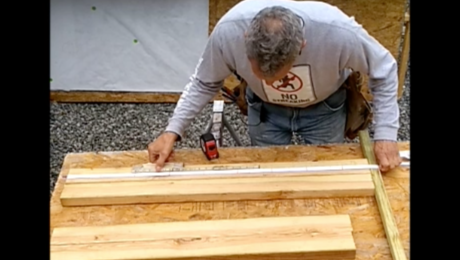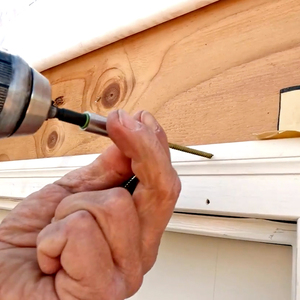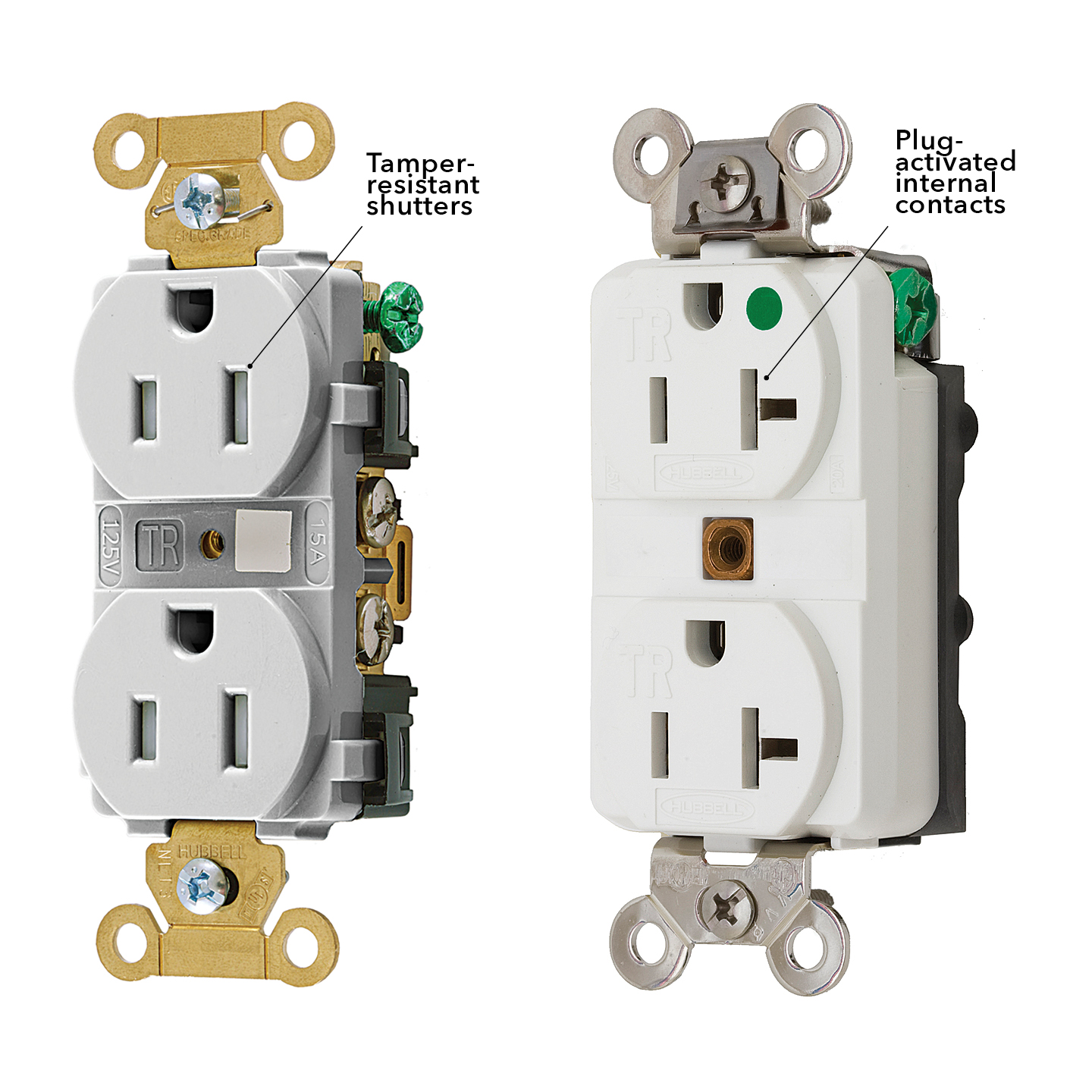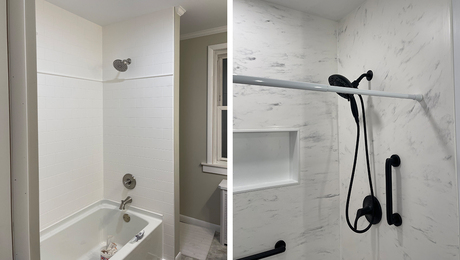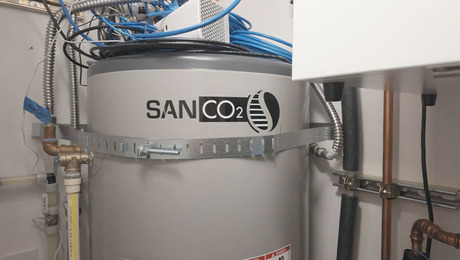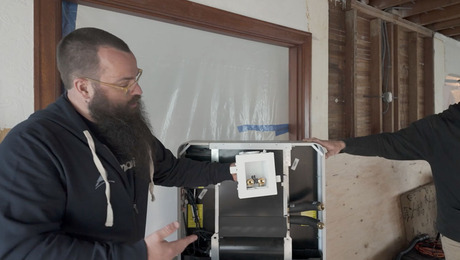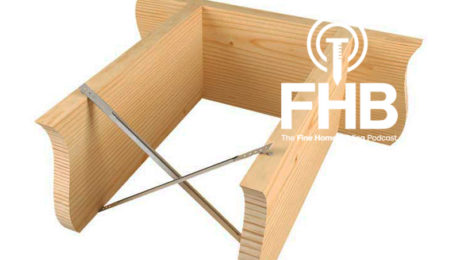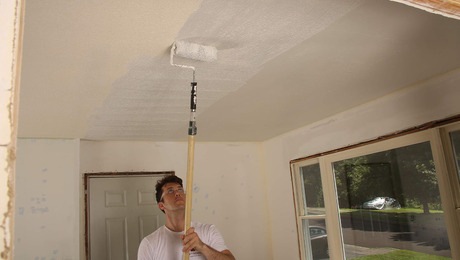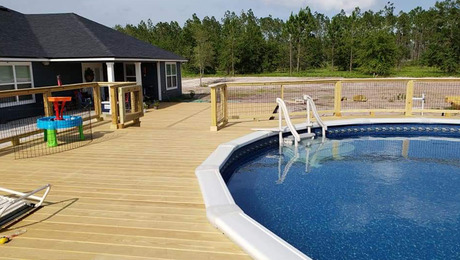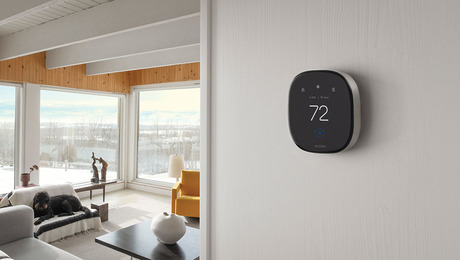The Best Way to Protect Heat Pumps from Rain and Snow
Ensure optimal heat pump performance under wet and potentially damaging conditions with these helpful tips and product recommendations.
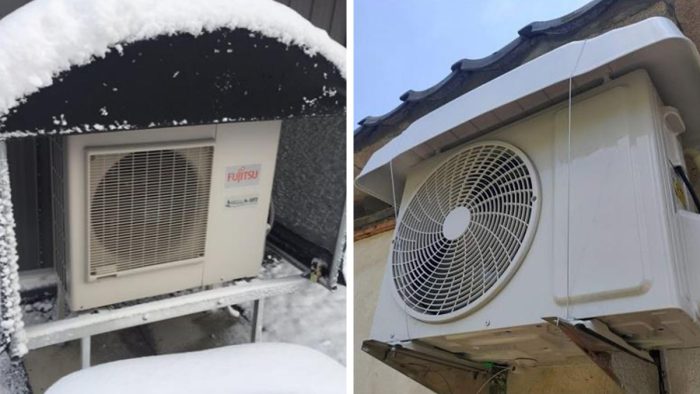
Heat pumps need to be elevated to keep them from being blocked by snow and to allow meltwater produced during the defrost cycle to drain away. Without adequate drainage, the meltwater can refreeze, clogging or damaging the unit. In a previous article, I looked at mounting options, including wall brackets and ground-mounted pads and stands.
While most of the frost that forms on the heat pump’s outdoor coil comes from water vapor in the air, liquid water can also add to the moisture load. The heat pump’s design shelters the coils from vertical rain, but wind-driven rain, splattering raindrops, and blowing snow landing on the coil can increase the frequency and length of defrost cycles.
Let’s Look at the Risks
Under normal circumstances, the extra moisture added by precipitation is modest, as is the impact on performance. But roofs can concentrate runoff from rain and melting snow at drip lines below eaves. Placing a heat pump under an eave can lead to ice buildup on the coil. If the ice becomes too thick, the system may not be able to clear it during the defrost cycle. Airflow drops, as does heat output. If the buildup continues, the system may shut down completely.
Snow sliding off metal roofs also poses a risk. A large mass of snow can bury, dent, or knock a heat pump out of level. In one case I know of, sliding snow ripped linesets out of their fittings, leading to a complete loss of refrigerant.
The best way to avoid problems with sliding snow, concentrated rain, and snowmelt is to keep heat pumps away from eaves and roof valleys, placing them instead on gable ends or under deep overhangs. When this isn’t possible, a protective awning or shield may be needed.
A few years ago, it was difficult to find off-the-shelf snow and rain shields. But the market for heat pump accessories has expanded rapidly, and many options are now available. Some attach to the building, while others connect to the heat pump cabinet or stand.
Like other balance-of-systems components, these protective devices add cost and affect aesthetics. Before looking at some of these products, I’ll discuss which parts of the heat pump most need protection. I’ll also argue for the cheapest option: installing the heat pump where no extra protection is required.
Horizontal Vs. Vertical Discharge Heat Pumps
Most cold-climate heat pumps have a horizontal discharge design. Horizontal discharge units are wider than they are deep. Most of the coil’s surface is at the rear of the unit; a smaller section extends around the left side. Air enters the unit through the coil and is blown out the front. In horizontal discharge units, protecting the rear and left side from bulk water is critical.
Many conventional heat pumps (and some cold-climate models) have a vertical discharge design. These units tend to have a square footprint. The coil wraps around all four sides, and the fan blows out the top. Shields for vertical discharge heat pumps are designed to keep rain and snow from entering the top of the unit while still allowing airflow.
Using Existing Features: Gables, Overhangs, and Decks
I’ll usually locate the heat pump on a gable end, away from drip lines. The gable wall also offers some shelter from wind-driven rain. The rake (the roof overhang on the gable end) can provide additional protection.
Another option is to place the heat pump under a deep roof overhang or cantilever. Overhangs offer several benefits including protecting walls and windows, diverting water away from foundations, and reducing summer solar gains. A heat pump under an overhang will be protected from precipitation and runoff.
The area under a deck is safe from sliding snow but can still be exposed to concentrated rain and snowmelt. A small piece of metal roofing can be screwed to the underside of the deck joists to divert runoff. It’s important to check that the space provides adequate clearance for airflow and service.
How much protection do gutters provide? A correctly installed and maintained gutter should capture all runoff. But a clogged or poorly installed gutter will overflow, spilling water and decaying plant matter onto anything below. Gutter guards, designed to keep leaves and twigs out, can concentrate debris under the eaves. And overflow can also occur if downspouts become blocked with ice. Unless I’m confident that gutters function well year-round, I prefer not to rely on them.
It’s also worth noting that gutters may not protect against sliding snow. If I must place a heat pump under the eave of a metal roof, I’ll recommend installing roof-mounted snow guards or rails. I’ll also recommend a sturdy structure to protect the heat pump itself.
Site-Built Shelters
A site-built roof or awning can be as simple as a pair of wood brackets holding up a sheet of metal roofing; this basic option can often be fabricated in a few hours with scrap materials. Higher-cost designs can be trimmed and painted to match the building’s facade.
|
|
One advantage of a site-built design is that it can be sized to provide ample overhangs. Another is that it can be constructed to the same standard as other structural elements like porches, which can withstand heavy snow accumulation and sliding snow. One disadvantage of site-built shelters is that they may require an architect and carpenter in addition to a heat pump technician. Another is they can add significant cost, especially if extra design and finish work are involved.
Custom Rain and Snow Hoods
Halco Energy, where I worked until recently, makes painted steel hoods in their sheet metal shop. The hoods are sized to fit over the tops of the LG and Mitsubishi units they install and are attached using the same screws that secure the heat pump’s top panel. The hoods slope toward the front; water runs toward a gutter, where it is diverted to the side of the unit. X-Thermic Solutions offers a similar product made to size from aluminum stock. Their hoods have a powder-coated finish and list at $149.95.
|
|
These custom hoods are durable and quick to install. The main disadvantage is that they don’t overhang the heat pump’s back and left sides. Although we never had problems with this design, I still wonder if these critical areas should be better protected.
Repurposed Window and Door Awnings
Window and door awnings, which are screwed or bolted to the wall, have been suggested as an off-the-shelf option for rain/snow protection.
One style, available online and in box stores, uses curved brackets made of ABS plastic to support a translucent sheet of polycarbonate. One example is the VINGLI Window Awning Door Canopy, which comes in three sizes. The smallest, 30-in. deep by 40-in. wide, retails for $42.99; the largest, 40 in. by 80 in., is $59.99. After looking at specifications and online reviews, I have concerns about how this very affordable design will fare in places with high winds and heavy snow loads. If any GBA readers have used products like these, I’d love to hear your feedback.
|
|
Other designs use metal for the frame and roof material but at a higher price. The Awntech Houstonian replicates the look of a standing-seam roof; the 36-in. deep by 44-in. wide model comes in black, bronze, copper, and pewter finishes. It retails at Lowe’s for $450–$665. The NuImage 3500 has an aluminum frame and painted metal slats and is available in several sizes and colors. The 44-in. by 33-in. model lists for $430.
|
|
Heat-Pump Specific Products
There are also several products sold expressly for heat pump rain and snow protection. Diversitech offers the QSRB1000, designed for use with their Quick-Sling stands and wall brackets. The kit includes two L-shaped steel brackets that support a rugged, UV-protected plastic roof. The QSRB1000 sells online for about $325.
|
|
Diversitech also offers the QSWS1000 weather shield. Like the QSRB1000, it uses a plastic roof, which mounts directly to the outdoor unit with adjustable metal flanges. The roof covers an area 17.6-in. deep by 43.4-in. wide. The QSWS1000 retails for about $375.
|
|
Hangar Outdoor’s Mini Split Snow Cap ($350) mounts directly to the heat pump. It features a two-piece roof made of powder-coated aluminum that telescopes to the unit’s width. A flashing at the back provides additional protection for the rear-facing section of the coil.
|
|
InnoPro makes polyethylene heat pump covers. Like the QSRB1000, these covers mount to the heat pump stand or wall bracket with provided steel rails and hardware. Two sizes are available: The S3719 is 19-in. deep by 37-in. wide and sells for $200 on Amazon. The S4422 is 22 in. by 44 in. and costs $250.
|
|
I came across a few other plastic heat pump shields online made by BPILOT, LSXIAO, and Fadiadem. These are available in several sizes and attach to the heat pump with adhesive strips, with thin aircraft cables as backup. With prices under $100 for smaller hoods, these look like an affordable option. I’d like to see more reviews (the three brands had fewer than 10 Amazon ratings between them) or handle these products before recommending them to customers.
|
|
Cover-Tech takes a very different approach in its line of heat pump covers. A frame made of steel tubing surrounds the heat pump’s sides and arches over the top. The frame supports a vinyl tarp canopy and mesh side panels. The frame attaches to the heat pump stand or wall bracket with provided clamps. Two stock sizes, both $295, are available for horizontal discharge heat pumps. The smaller model is 28-in. deep by 46-in. wide by 34-in. tall; the larger is 28 in. by 56 in. by 43 in. Custom sizes can also be ordered. Because it protects the sides of the heat pump, the Cover-Tech design would be a good choice for locations with lots of blowing and drifting snow.
MarketAir offers a similar product with top and side protection. It comes in small, medium, and large sizes and lists for $800-$975.
Vertical Discharge Units
The products I’ve described above are designed for horizontal discharge heat pumps. But what about vertical discharge units? Cover-Tech makes an extra large cover for vertical discharge units. Similar in overall design to their other heat pump covers, it’s 36-in. deep by 52-in. wide by 54-in. tall. The tarp canopy has been replaced with mesh to allow more vertical airflow while preventing snow entry. It lists for $395.
InnoPro also makes polymer snow covers for vertical discharge pumps. Their design resembles a small plastic table that mounts directly to the top of the unit. Different models are available to match the footprints of common outdoor units, including Carrier, Bryant, Goodman, Amana, Rheem, and Bosch. It’s available online for $500.
|
|
Some heat pump manufacturers, like Trane/American Standard, offer shields made specifically to fit their vertical discharge products.
Choosing a Solution
With so many rain and snow protection options available, how should one choose? I’ll offer a few suggestions:
- Whenever possible, take advantage of existing features like gable ends and deep overhangs.
- Where sliding snow is a risk, install roof-mounted snow guards and a sturdy site-built roof or metal awning.
- For very windy sites, consider a product with side panels to protect from blowing snow.
- Remember that all else being equal, shields that overhang the unit provide more protection than ones that don’t.
With these considerations in mind, you can select a product that best matches your budget and aesthetic preferences.
— Jon Harrod; writer, HVAC project manager, and building science consultant based in Ithaca, N.Y. Originally published on Green Building Advisor January, 2024.
RELATED STORIES


